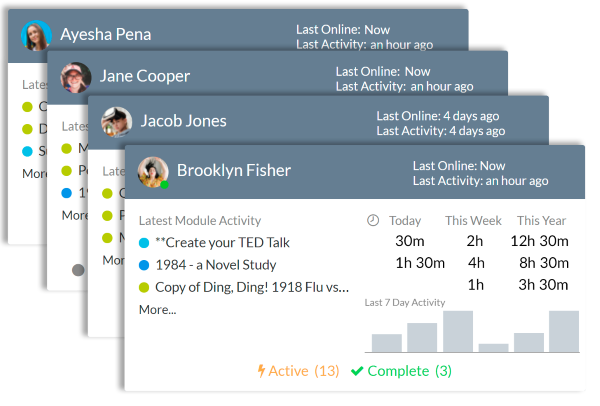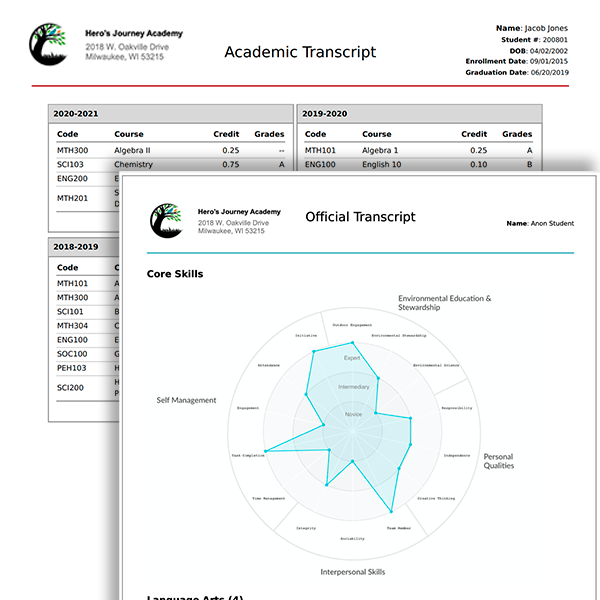How a school can become a national model for student-led learning
The MNCS Difference
In a town of 950 people, there’s a school that threw out the rulebook 30 years ago and never looked back.
Minnesota New Country School (MNCS) was built on one bold belief: students should be in charge of their learning.

No bells. No lectures. No traditional classrooms. Instead: student-designed projects, interdisciplinary seminars, and immersive “Experience Weeks” that send kids to South Dakota, Japan, or even on-ground two-day crash courses in personal finance.
It’s loud. It’s messy. And most days, it doesn’t look like learning. But if you ask the students what they’re working on? You’ll hear about podcasts, robots, rock albums, rebuilt engines, and independent research that rivals most college freshmen. That’s what school looks like here.
- Nick Ryan, High School Advisor @ MNCS
By the time they graduate, every senior completes a 300-hour capstone project that reflects what they’ve learned, what they care about, and where they’re headed next. The school’s innovative K-12 model has inspired dozens of lookalike schools across the country.
Tom Vander Ark, former head of education at the Gates Foundation, even called MNCS one of the “Coolest Schools in America.”
But for all its success, MNCS faced a major problem—one that threatened to undermine the whole model.
The problem wasn’t the learning. It was the logistics.
There are no traditional grades at MNCS. Students earn fractional credit based on what they do, not how long they sit in class. A group seminar might have 7th and 12th graders in the same room, each tracking different learning objectives. Projects span multiple subjects, timelines, and standards.
Every day, students are expected to log their time, provide evidence, and reflect on their work. Seventh graders start small—maybe a word or two. By senior year, they’re writing formal reports and defending their work like trial lawyers.
-
That level of personalization works beautifully for progressive learning. But for the students and staff tracking credit? It was a logistical nightmare.
Nick remembers the early days when students used binders, Google Drive folders, and paper journals to track their work. Advisors were stuck reconciling who did what, when, and for how long. If a spreadsheet got deleted? So did that student’s history.
There was a time when students had a binder that was 3 inches thick. As an advisor, you’d have to try managing all of the credit tracking paper. It was a nightmare.
- Nick Ryan
Experience Weeks made it even harder. A single week might involve 20 students across five different grade levels—some earning credit toward graduation standards, others not. Each student needed different documentation, different reflection prompts, different credit allocations.
And that was just one week.
Without the right system, MNCS was risking the very thing it was designed to protect: student-led learning.
They didn’t need more structure. They needed better infrastructure.
When MNCS came to Headrush, we didn’t ask them to change their model. We just gave them the tools to make it work.
Now everything lives in one place. Students go to Headrush to:
🎤 Propose and manage their own projects
📝 Log time and reflections daily
🤳🏽 Upload photos or Drive links as evidence
🛤️ Track credit and progress any time
💡 Receive timely advisor feedback
👩🏼🎓 See how projects map back to graduation standards
Before, they were juggling Drive folders, Docs, paper journals, and emails just to document a single project. Advisors had to chase down files, sort out who submitted what, and manually log progress. That kind of work kills momentum for both students and staff.
Now, students upload photos straight from their phones. They link evidence from Google Drive. They reflect directly in the system. And they build a real case for credit backed by documented learning.
I can log into Headrush and see exactly what each student did that day. Their time logs, their reflections, their evidence—it’s all there, in one place.
- Nick Ryan
For advisors like Nick, it means no more digging through folders, email chains, or half-filled spreadsheets. He can see what every student did that day, scroll through their progress, and jump in with feedback—all from a single view.
Why traditional LMS tools didn’t work for MNCS
Traditional classroom tools are built for classrooms with static assignments, fixed due dates, and teacher-controlled learning.
That’s not MNCS. MNCS needed something that:
- Was built for asynchronous, self-paced work
- Supported long-term, nonlinear projects
- Could flex between individual and group learning
- Didn’t require hours of admin work from students or teachers
- The difference isn’t just convenience. It’s alignment.

Headrush reflects how MNCS actually works. And that’s what makes it stick.
A system that makes growth visible
Headrush didn’t just clean up the backend. It made learning visible.
Students can now scroll back through years of learning, see their growth, and actually reflect on how far they’ve come. A student might open a sixth-grade project and cringe at their work—but recognize how much sharper, deeper, and more confident they’ve become.
A transcript colleges (and parents) can trust
MNCS doesn’t do traditional grades or GPAs. That used to make college reporting tricky. Transcripts had to be cobbled together manually with inconsistent formatting and limited context.
Headrush made college reporting so much easier.

Now, MNCS can generate clean, detailed transcripts that show what a student actually did, how it maps to standards, and what skills they built along the way.
“It gives us credibility. Not just with colleges—but with parents. They want to know: ‘Is my kid learning something real here?’ Now, we can show them.”
Even if the project title is Kill That Squirrel (real project, by the way), the transcript still looks professional.
The result? Freedom with a foundation
MNCS didn’t need a new philosophy. They needed a system that honored the one they already had.
With Headrush, they didn’t have to trade flexibility for functionality. They got both.
Students still work on what matters to them. Advisors spend more time coaching and less time chasing.
And the school can keep pushing boundaries—without falling apart at the seams.
Feel the Rush
It’s not just a tool. It’s the scaffolding that makes student-led learning possible at scale. One place for time logs, project evidence, reflection, credit tracking, and college-ready transcripts. One system that meets students where they are, and grows with them as they do.
If you’re running a school that values independence, creativity, and real-world learning—you don’t need to compromise structure for freedom. You just need the right foundation.
Headrush gives you both. Want to see how it can work for your school?